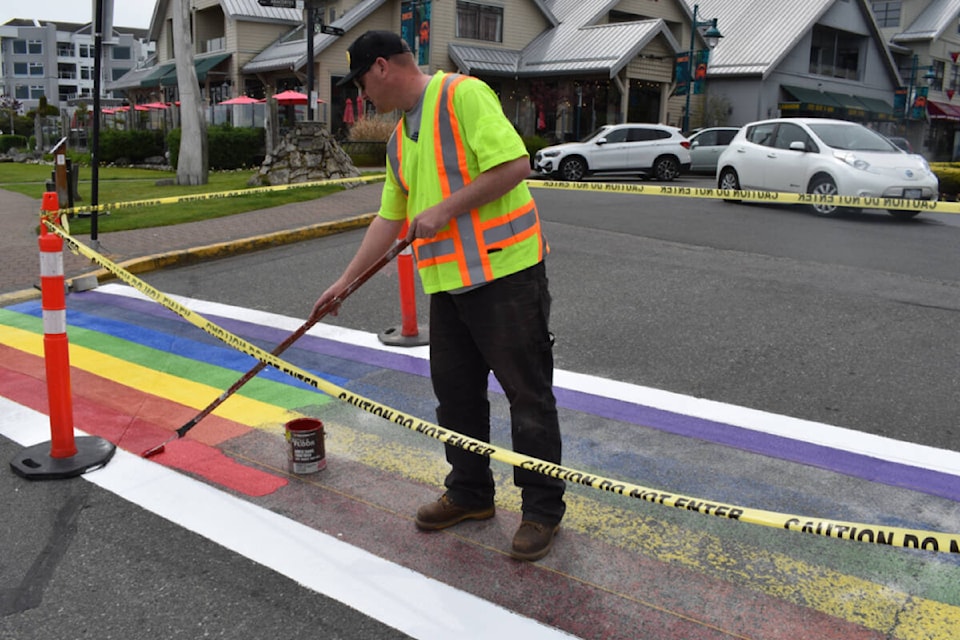As Canadians mark Pride Month, various surveys find that members of the LGBTQ2+ communities continue to report unique challenges in terms of housing, education, victimization and mental health.
According to a 2021 report from Statistics Canada, Canada is home to about one million people who self-identify as members of LGBTQ2+ population, accounting for about per cent per cent of the population aged 15 and older in 2018.
The LGBTQ2+ population is relatively young, as youth aged 15 to 30 make up 30 per cent, compared to 14 per cent of the non-LGBTQ2+ population. It is also more urban, as almost half of the gay and lesbian population (46.5 per cent) lived in the three largest census metropolitan areas in Canada (Toronto, Montréal, Vancouver) and more likely to live in common-law unions than heterosexual people.
The 2021 census included for the first time a question on gender and the precision of �㽶��Ƶֱ���at birth�㽶��Ƶֱ��� on the sex question, allowing all cisgender, transgender and non-binary individuals to report gender.
Of the nearly 30.5 million people in Canada aged 15 and older living in a private household in May 2021, 100,815 were transgender (59,460) or non-binary (41,355), accounting for 0.33 per cent of the population in this age group, with Victoria CMA reporting the largest share of transgender and non-binary people.
Other figures also point to other areas of specific concern, starting with housing.
RELATED:
The 2018 Canadian Housing Survey also found that the LGBTQ2+ population is less likely to own homes outright (47 per cent of LGBTQ2+ own outright, compared to 69 per cent to non-LGBTQ2 +), more likely to rent (53 per cent versus 31 per cent) and more likely to live in subsidized housing (six per cent versus four per cent). LGBTQ2+ households (30 per cent) were also more likely to spent more than 30 per cent of their total household income on shelter than non- LGBTQ2+ households.
In terms of education, school attendance rates were similar between the gay or lesbian, bisexual and heterosexual populations for youth aged 18 to 29.
But the 2022 Statistics Canada report also finds one in 10 (10.8 per cent) reported experiencing discrimination based on sexual orientation or assumed sexual orientation in the post secondary setting in the past 12 months compared with 1.2 per cent of heterosexual students according to a 2019 survey.
Gay, lesbian, bisexual and other sexual minority people in Canada were almost three times more likely than heterosexual Canadians to report that they had been physically or sexually assaulted in the previous 12 months in 2018, and more than twice as likely to report having been violently victimized since the age of 15, according to data from 2018 published in 2020.
Transgender Canadians were more likely to have experienced violence since age 15, and also more likely to experience inappropriate behaviours in public, online and at work than cisgender Canadians.
The LGBTQ2+ community was also less likely to report their physical assaults to the police. Overall, crimes motivated by hatred of a sexual orientation made up 10 per cent of all police-reported hate crimes in 2020, according to Statistics Canada, with the number trending down.
Overall, sexual minority Canadians were more likely than heterosexual Canadians to report that they considered their mental health to be poor or fair (32 per cent versus 11 per cent), according to 2018. They were also more likely to have seriously contemplated suicide in their lifetimes (40 per cent versus 15 per cent), and to have been diagnosed with a mood or anxiety disorder (41 per cent versus 16 per cent) with trans-gender people likely to have seriously contemplated suicide in their lifetimes.
Do you have a story tip? Email: vnc.editorial@blackpress.ca.
Follow us on and and like us on



